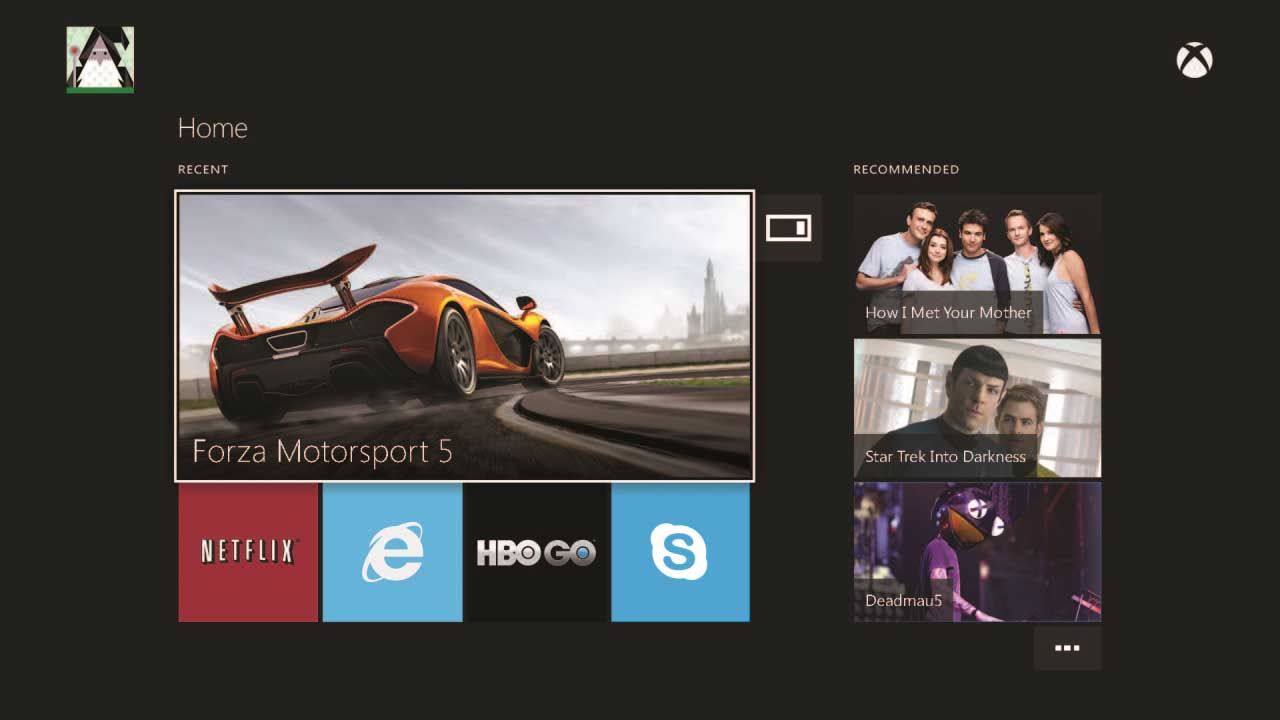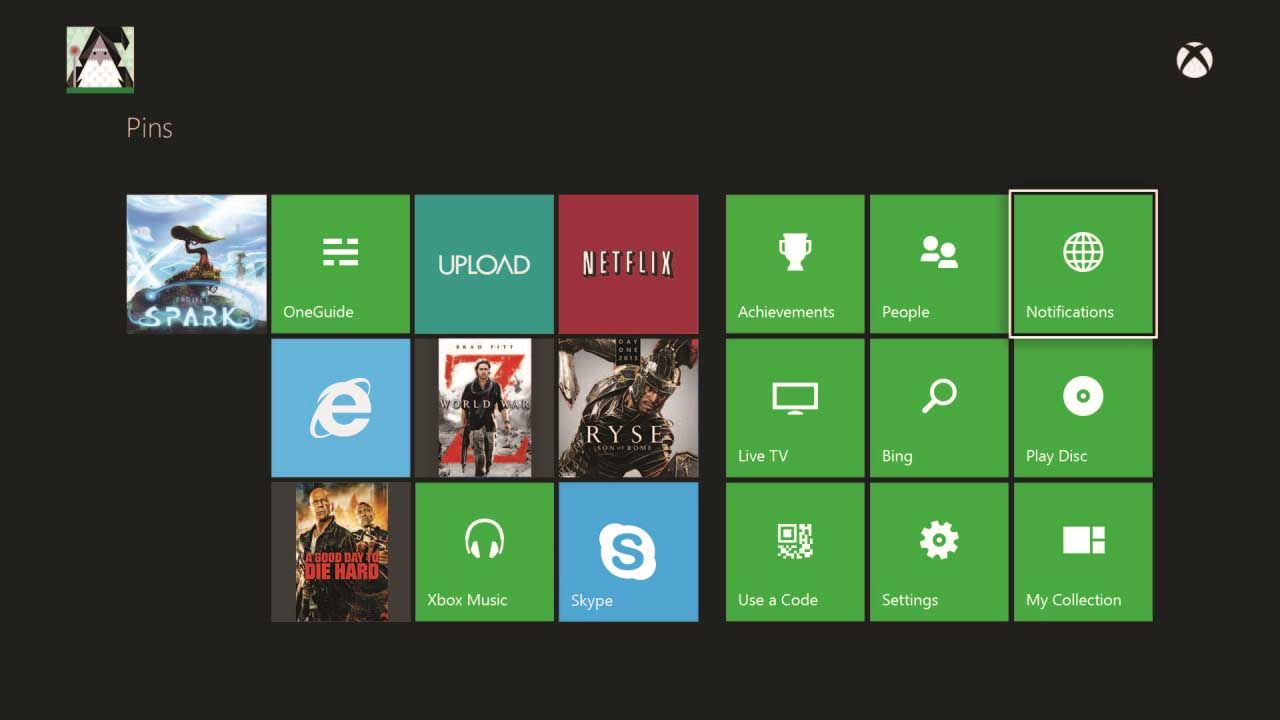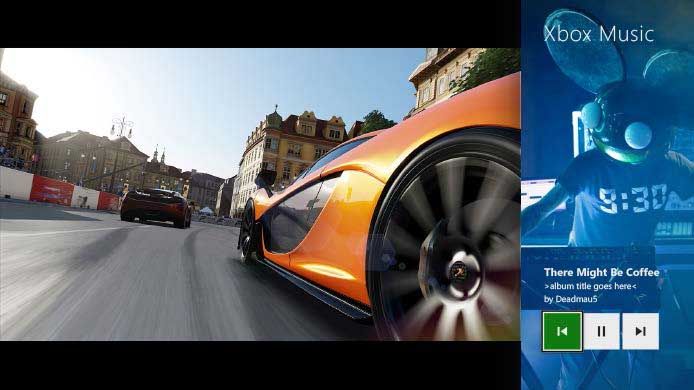Much has been said about the Xbox One, but little has been seen of its user experience, the home hub, the place you will see more than any game. Pocket-lint attended a demo during Gamescom 2013 in Cologne, Germany, that changed all that.
We saw the main UI design and several of the new features that will make navigating around the console as simple as possible. And we discovered how important voice recognition will be in the way you interact with your shiny, new machine. Kinect may have been more of a gimmick on the Xbox 360, but from what we've witnessed Microsoft isn't lying when it says that it will be integral to the full Xbox one experience.
Before we go into the nuts and bolts, however, it's worth pointing out a couple of things. First, the build of the UI we saw is still in beta form. Second, we were not allowed to take any photos of the screen at present. Microsoft has released some screengrabs, but they aren't quite representative of what we saw. We'll no doubt see more in the coming month or so.
In appearance it isn't a million miles away from what the Xbox 360 UI is like at present. In fact, anybody who has been using Windows 8 and not reverting to desktop mode will find it all very familiar. That's all done on purpose, of course, and helps unify a family of devices with a common aesthetic, and we have been fond of the latest 360 front end for a while, so all is good there.
Where things get interesting is with profiles. Kinect immediately senses who you are and adapts your home screen to suit, and as all of your settings and save games are held in the cloud, this can be done on any Xbox One you happen to stand in front of. It doesn't have to be your own. Go to a friend's house, stand in front of their console and Bob's your uncle, your profile changes the experience.
Up to six profiles can also be logged in to the same console at the same time, switching certain features and favourites depending on who is standing or talking to the console at the time.
For example, if you want to bring up your friends menu, just tell it to vocally. It will recognise your voice - again, no matter what Xbox one you are using at the time. If a friend or family member wants to bring up their own friends menu, they say so and it will recognise their voice and act accordingly. It impressed the socks off us in the demo, that's for sure.
Speaking of friends, there are plenty of new features in that area too. For the first time, you can follow other gamers and they can follow you. Think Twitter and you're not far off.
You can follow up to 1,000 friends, but the number of followers you can have is limitless. And if some of those you are following are more important to you, you can pin them to favourites to find them instantly.
There is even a feed to see what they are playing or saying, regardless of whether it be Xbox One or Xbox 360 games. It brings a far greater sense of social networking to Xbox Live than ever before.
You can also see your achievements on multiple devices through the Xbox One achievements hub. It doesn't matter if they are on Xbox 360, Windows Phone or Windows 8, they will be viewable alongside your Xbox One efforts. Plus, developer depending, achievements this time around can be dynamic. They can add new achievements for their games at any point, creating all-new challenges for you to go back into the game.
Another new feature that uses voice commands also uses the built-in IR blaster. You can programme the Xbox One to control every AV device in your set-up and, by just saying things like "Xbox volume up" and "Xbox volume down" you can control your TV, amplifier or whatever else you choose. As long as the item of kit accepts infra-red controls, it can be operated through the Xbox One and Kinect - and all while you're playing too.
Microsoft will also be hosting a data library of IR codes - much like the Harmony remotes - so you just need to search for your kit and it will assign the codes automatically.
Finally, we saw how the in-game video recording functionality works. It has been known for a while that the Xbox One will constantly record the last 30 seconds of gameplay. Well, if you say "Xbox record that" at any point while playing, it will render those last 30 seconds in 720p video to be posted wherever you like. And you can view it first before sending, while the game pauses.
If you want more manual video recording modes, you can get them by snapping a dedicated app to the display. The game screen will condense slightly and the app will run in a bar on the right. You can also snap any other app, including Twitter, if you want to keep up on what people are saying, for instance.
We feel like we've only touched the surface of what the new console is capable of, but these few features at least give us an insight to what Microsoft has planned for release. We saw it running on an actual Xbox One as well, not a PC or devkit, so we're close baby. We're very close.



